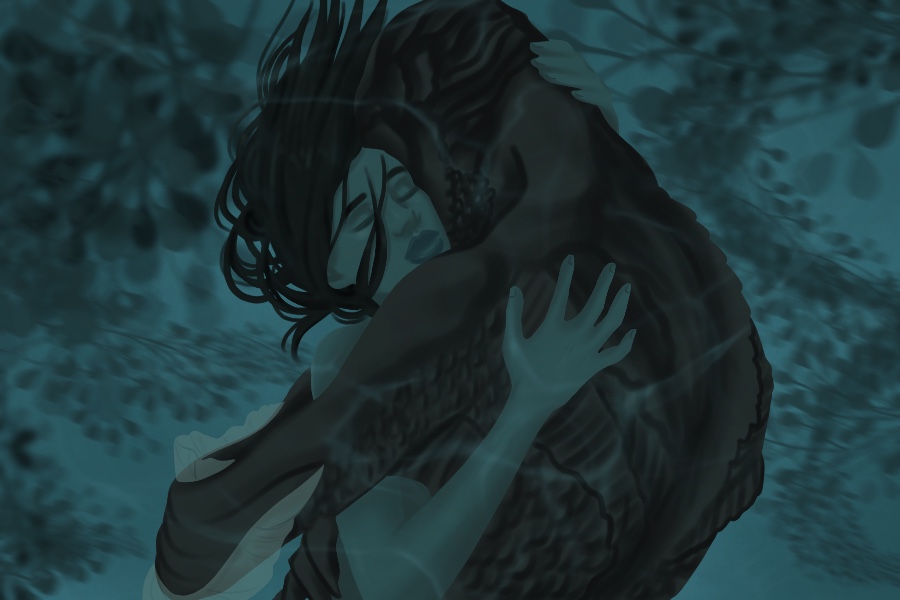
An award-winning allegory about unexpected love
Director Guillermo del Toro shows us that love isn’t always pretty — literally. His poetic, Golden Globe-winning sensation, “The Shape of Water,” tells the story of a timid, mute cleaning woman named Elisa who falls in love with a mysterious water creature, who is captured for experimentation in hopes of gaining a strategic advantage over the Soviets amid the Cold War and the ongoing Space Race.
“The Shape of Water” reinvents the classic tale of a beauty finding her beast. It is a fantasy that shares wonderful truths about love — it’s often unexpected, and it’s not always conventional. Elisa is mute and the nameless fish creature is, well, a fish creature. Regardless, the two create a strong connection that stems from their unspoken and mutual understanding that they are deviants of the society in which they live.
Del Toro maintained his stylistic integrity by including horror aspects in a whimsically crafted visual production. The Cold War backdrop of the ‘60s is well thought out, and it makes the audience feel as if they are being submerged in the era. “The Shape of Water” strays from the usual direction that del Toro’s films take, though, because it centers around a love story. Well-known titles like “Pan’s Labyrinth” and “Crimson Peak” are darker and less heartfelt.
The narrative of “Shape of Water” is simple, but the emotions of the main character are expressed by Sally Hawkins quite well. It is quite common to find hidden symbolism in films by del Toro, which makes rewatching “The Shape of Water” a new experience every time. Del Toro also leaves the interpretation up to the audience so they may discover the themes relevant and significant to themselves.
Elisa is an isolated individual, trapped in an everyday routine of masturbating in the tub every morning and boiling eggs before she leaves for work. However, she has a pair of wonderful friends named Giles and Zelda Fuller — played by Richard Jenkins and Octavia Spencer. Giles and Zelda portray the hardships of minority groups during the time. Giles represents those forced to repress their sexuality, and Zelda addresses the unequal treatment of African Americans during that time. Despite their struggles, they remain loving friends to Elisa. Together, the three of them invent a plan to help the creature escape before he is killed and dissected by researchers.
Michael Shannon plays the villain of the film, Richard Stickland, an agent working for United States intelligence who unfortunately has no redeeming qualities, which made seeing his demise rather easy in the end. In fact, it spoiled it. Also, his rotting fingers that get progressively viler as the movie goes on don’t make him likeable.
I feel many UC Davis students can relate to some piece of this film. Whether they enjoy dark fantasies, romance or action, there is something for everyone to appreciate.
My favorite quote from the movie is this: “Unable to perceive the shape of you, I find you all around me. Your presence fills my eyes with your love, it humbles my heart, for you are everywhere.” A perfect ending that makes the audience (or just me) realize the irony that water has no shape, but takes the form of its unique environment.
“The Shape of Water” is showing at The Varsity theatre in downtown Davis. Showtimes are listed on their website.
Written by: Josh Madrid — arts@theaggie.org



